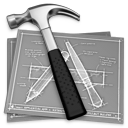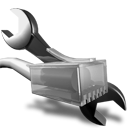 |
 |
 |
 |
 |
 |
 |
 |
|
|
|
|
|
|
|
|
|
|
|
 |
Fedora 13 released (25/05/2010) |
|
|
|

Fedora®
Fedora is a Linux-based operating system that showcases the latest in free and open source
software. Fedora is always free for anyone to use, modify, and distribute. It is built by people across the
globe who work together as a community: the Fedora Project. The Fedora Project is open and anyone is
welcome to join.
The Fedora Project is out front for you, leading the advancement of free, open software and content.
1.1. Fedora 13 Overview
As always, Fedora continues to develop (http://www.fedoraproject.org/wiki/Red_Hat_contributions)
and integrate the latest free and open source
software (http://www.fedoraproject.org/wiki/Features).
The following sections provide a brief overview of major changes from the last release of
Fedora. For more details about other features that are included in Fedora 13 refer to their
individual wiki pages that detail feature goals and progress:
http://www.fedoraproject.org/wiki/Releases/13/FeatureList
Throughout the release cycle, there are interviews with the developers behind key features giving out the inside story:
http://www.fedoraproject.org/wiki/Interviews
The following are major features for Fedora 13:
![]() Automatic print driver installation — refer to Section 4.3, “Printing”
Automatic print driver installation — refer to Section 4.3, “Printing”
![]() Automatic language pack installation — refer to
Section 4.4, “Internationalization”
Automatic language pack installation — refer to
Section 4.4, “Internationalization”
![]() Redesigned user account tool — refer to Section 4.1, “Fedora Desktop”
Redesigned user account tool — refer to Section 4.1, “Fedora Desktop”
![]() Color management to calibrate monitors and scanners — refer to
Section 4.1, “Fedora Desktop”
Color management to calibrate monitors and scanners — refer to
Section 4.1, “Fedora Desktop”
![]() Experimental 3D support for NVIDIA video cards — refer to
Section 4.1, “Fedora Desktop”
Experimental 3D support for NVIDIA video cards — refer to
Section 4.1, “Fedora Desktop”
Some other features in this release include:
![]() A new way to install Fedora over the Internet — refer to
Section 2, “Installation Notes”
A new way to install Fedora over the Internet — refer to
Section 2, “Installation Notes”
![]() SSSD authentication for users — refer to
Section 2, “Installation Notes”
SSSD authentication for users — refer to
Section 2, “Installation Notes”
![]() Updates to NFS — refer to
Section 5.9, “File Systems”
Updates to NFS — refer to
Section 5.9, “File Systems”
![]() Zarafa Open Source edition, a new open-source groupware suite — refer to
Section 5.4, “Mail Servers”
Zarafa Open Source edition, a new open-source groupware suite — refer to
Section 5.4, “Mail Servers”
![]() System rollback for the Btrfs file system — refer to
Section 5.9, “File Systems”
System rollback for the Btrfs file system — refer to
Section 5.9, “File Systems”
![]() Better SystemTap probes — refer to
Section 6.2, “Tools”
Better SystemTap probes — refer to
Section 6.2, “Tools”
![]() A Python 3 stack that can be installed parallel to an existing Python stack — refer to
Section 6.2, “Tools”
A Python 3 stack that can be installed parallel to an existing Python stack — refer to
Section 6.2, “Tools”
![]() Support for the entire Java EE 6 spec in Netbeans 6.8 — refer to
Section 6.4, “Java”
Support for the entire Java EE 6 spec in Netbeans 6.8 — refer to
Section 6.4, “Java”
Features for Fedora 13 tracked on the feature list page:
http://www.fedoraproject.org/wiki/Releases/13/FeatureList
A discussion putting these features in context may be found at:
http://www.fedoraproject.org/wiki/Fedora_13_Talking_Points
1.2. Hardware Requirements
1.2.1. Processor and memory requirements for x86 Architectures
The following CPU specifications are stated in terms of Intel processors. Other processors, such as those from AMD, Cyrix, and VIA that are compatible with and equivalent to the following Intel processors, may also be used with Fedora. Fedora 13 requires an Intel Pentium Pro or better processor, and is optimized for i686 and later processors.
![]() Recommended for text-mode: 200 MHz Pentium Pro or better
Recommended for text-mode: 200 MHz Pentium Pro or better
![]() Recommended for graphical: 400 MHz Pentium Pro or better
Recommended for graphical: 400 MHz Pentium Pro or better
![]() Minimum RAM for text-mode: 256 MiB
Minimum RAM for text-mode: 256 MiB
![]() Minimum RAM for graphical: 384 MiB
Minimum RAM for graphical: 384 MiB
![]() Recommended RAM for graphical: 512 MiB
Recommended RAM for graphical: 512 MiB
1.2.2. Processor and memory requirements for x86_64 architectures
![]() Minimum RAM for text-mode: 256 MiB
Minimum RAM for text-mode: 256 MiB
![]() Minimum RAM for graphical: 384 MiB
Minimum RAM for graphical: 384 MiB
![]() Recommended RAM for graphical: 512 MiB
Recommended RAM for graphical: 512 MiB
1.2.3. Hard disk space requirements for all architectures
The complete packages can occupy over 9 GB of disk space. Final size is entirely
determined by the installing spin and the packages selected during installation.
Additional disk space is required during installation to support the installation
environment. This additional disk space corresponds to the size of
/Fedora/base/stage2.img (on Installation Disc 1) plus the size of the files in
/var/lib/rpm on the installed system.
In practical terms, additional space requirements may range from as little as 90
MiB for a minimal installation to as much as an additional 175 MiB for a larger
installation.
Additional space is also required for any user data, and at least 5% free space should
be maintained for proper system operation.
1.3. Welcome to Fedora
Fedora is a Linux-based operating system that showcases the latest in free and open source
software. Fedora is always free for anyone to use, modify, and distribute. It is built by
people across the globe who work together as a community: the Fedora Project. The Fedora
Project is open and anyone is welcome to join.
The Fedora Project is out front for you, leading the advancement of free, open software and
content.
You can help the Fedora Project community continue to improve Fedora if you file bug reports and enhancement requests. Refer to
http://fedoraproject.org/wiki/Bugs_and_feature_requests
for more information about bug and feature reporting. Thank you for your participation.
To find out more general information about Fedora, refer to the following Web pages:
![]() Fedora Overview (http://fedoraproject.org/wiki/Overview
Fedora Overview (http://fedoraproject.org/wiki/Overview
![]() Fedora FAQ (http://fedoraproject.org/wiki/FAQ)
Fedora FAQ (http://fedoraproject.org/wiki/FAQ)
![]() Help and Discussions (http://fedoraproject.org/wiki/Communicate)
Help and Discussions (http://fedoraproject.org/wiki/Communicate)
![]() Participate in the Fedora Project (http://fedoraproject.org/wiki/Join)
Participate in the Fedora Project (http://fedoraproject.org/wiki/Join)
1.4. Common bugs
Most complex software contains bugs. One of the features of free and open source
software is the ability to report bugs, helping to fix or improve the software you use.
A list of common bugs is maintained for each release by the Fedora Project as a
good place to start when you are having a problem that might be a bug in the
software:
http://fedoraproject.org/wiki/Common_F13_bugs
1.5. Feedback
Thank you for taking the time to provide your comments, suggestions, and bug reports to the Fedora community; this helps improve the state of Fedora, Linux, and free software worldwide. A list of commonly reported bugs and known issues for this release is available from http://fedoraproject.org/wiki/Common_F13_bugs.
1.5.1. We Need Feedback!
If you find a typographical error in this manual, or if you have thought of a way to make this manual better,
we would love to hear from you! Please submit a report in Bugzilla:
http://bugzilla.redhat.com/bugzilla/against the product Fedora Documentation.
When submitting a bug report, be sure to mention the manual's identifier: release-notes
If you have a suggestion for improving the documentation, try to be as specific as possible when
describing it. If you have found an error, please include the section number and some of the surrounding
text so we can find it easily.
1.5.2. Other Ways to Leave Feedback
You can learn more about the Bugzilla process at http://fedoraproject.org/wiki/Bugs_and_feature_requests. However, if you are not comfortable leaving feedback through Bugzilla, you could also:
![]() If you have a Fedora account, edit content directly at http://fedoraproject.org/wiki/Documentation_Beats.
If you have a Fedora account, edit content directly at http://fedoraproject.org/wiki/Documentation_Beats.
![]() Email relnotes@fedoraproject.org.
Email relnotes@fedoraproject.org.
2. Installation Notes
Anaconda is the name of the Fedora installer. This section outlines issues related to anaconda and installing Fedora 13.
2.1. boot.fedoraproject.org
Fedora 13 introduces a new method of installing or upgrading Fedora over the Internet, using boot
images available from http://boot.fedoraproject.org/. Images are available for a
variety of media, including USB, CD and DVD, and floppy disk.
You can use this image to start the boot process on a system, which then contacts a remote server to complete the boot process
and launch the installer. The process is similar to booting on a network with a Preboot Execution
Environment (PXE) server available.
The installation or upgrade process itself is the same as if you were performing the process with local
media, such as a DVD.
There is nothing in the boot image that is specific to this version of Fedora; in future, you can use the
same boot image to install or upgrade to subsequent versions of Fedora.